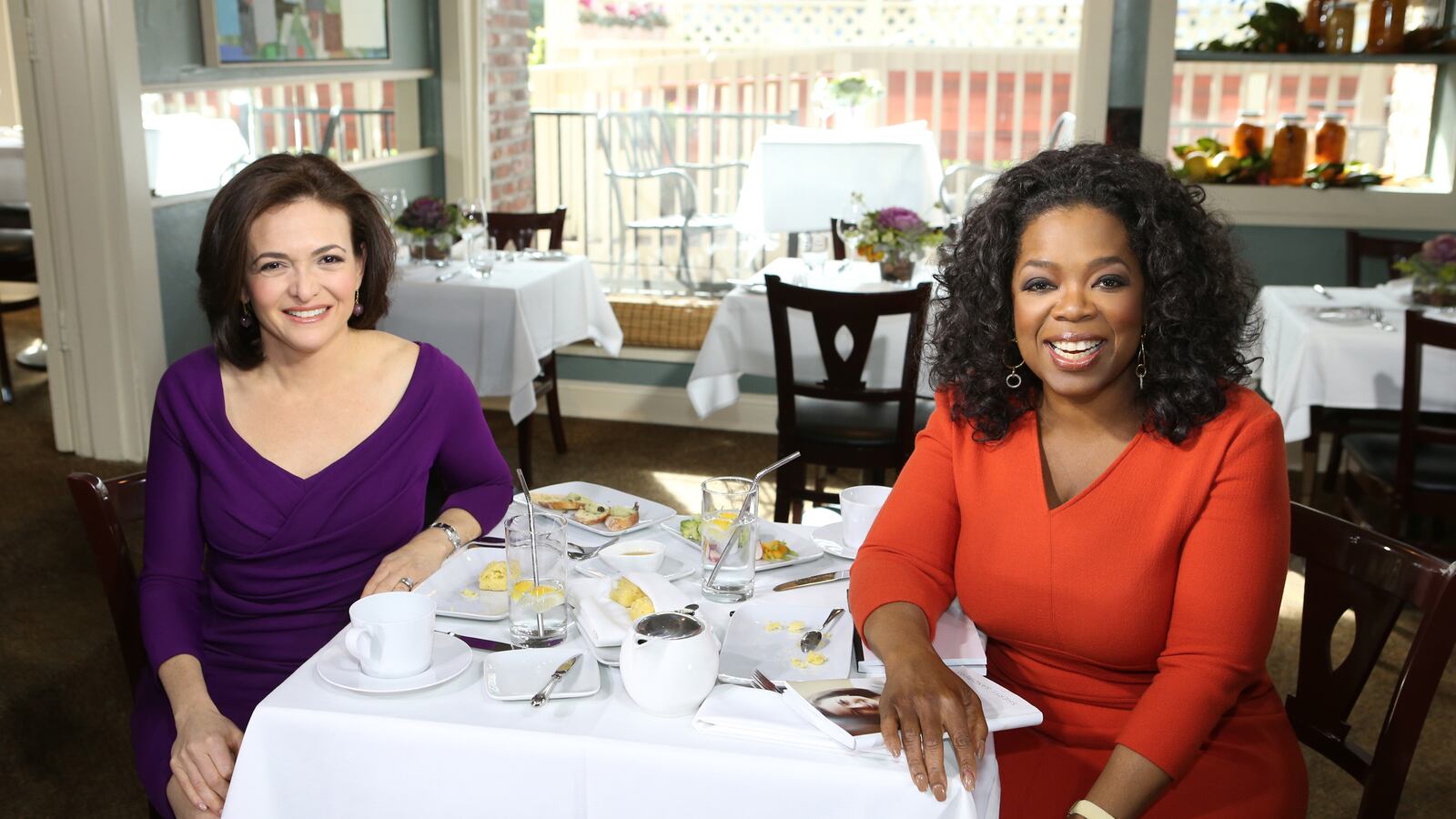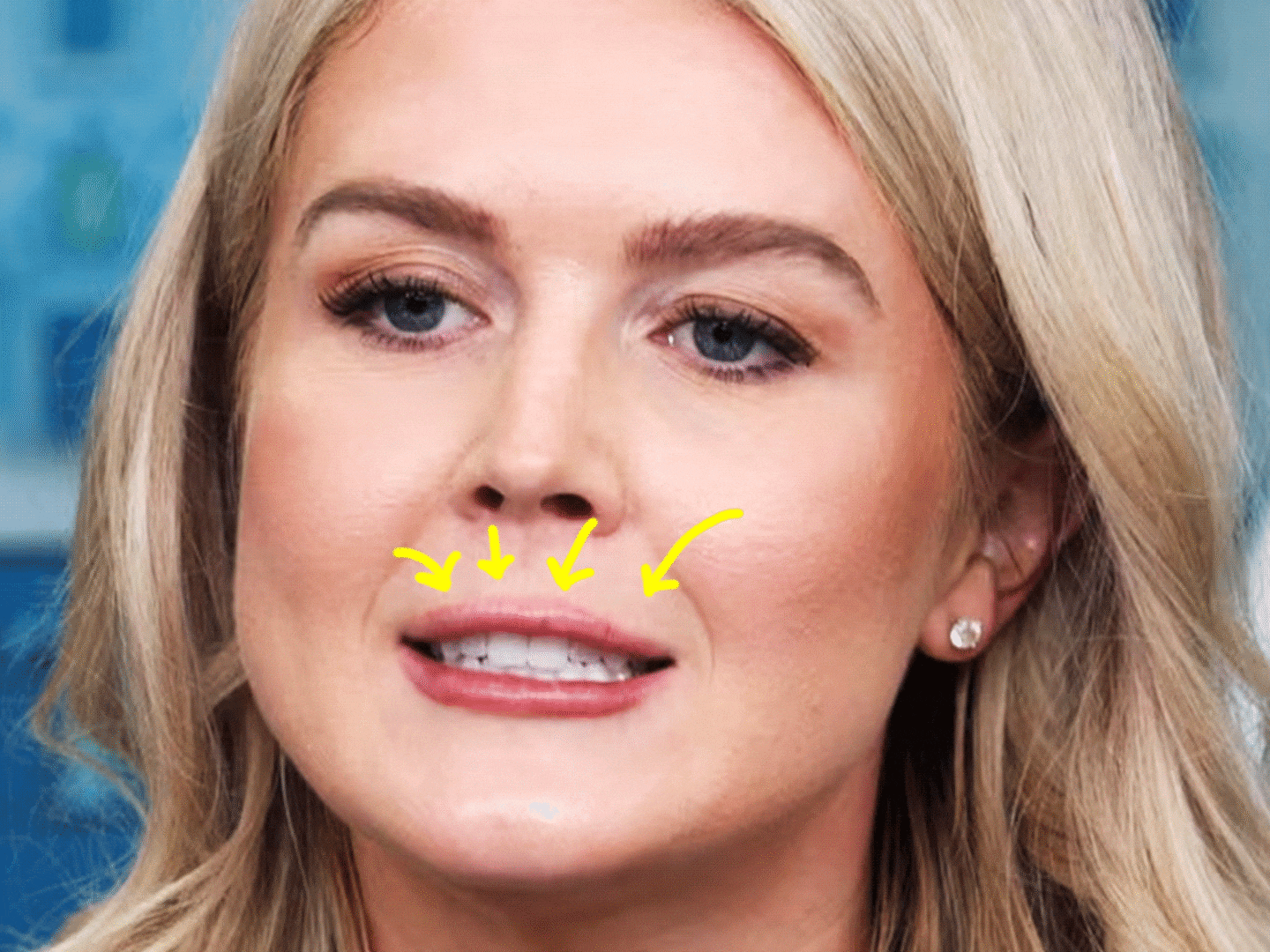From her first date with Mark Zuckerberg to leaning in and having it all, the juiciest bits from Sheryl Sandberg’s sit-down with Oprah.

Sandberg on her first date with Mark Zuckerberg:
“It was datelike in the sense that I was nervous,” Sandberg tells Oprah, but she and Zuckerberg spent a long night together during their first meeting over dinner in 2008. She may have been married, but she couldn’t resist inviting him back to her place after the restaurant closed. “It was 10 at night, way past my bedtime. But he clearly wanted to keep talking, and he was Mark Zuckerberg,” she explained to Oprah. She finally kicked him out at midnight, but it was clear the two had chemistry. “I knew immediately how warm he was, and how much he cared about Facebook.” Most important, they had the same vision for the social network: “to connect the whole world.”
Would their age difference ruin their partnership?
Sure, the first date went well, but Sandberg and Zuckerberg had to get over a few humps when she first started working at Facebook. Even while they discussed the company’s business plan—to make money while keeping users satisfied—she was anxious that they wouldn’t see eye to eye on everything. “We needed to trust each other,” she tells Oprah. When she was still in the interviewing process, it was clear that she and Zuck operated on different schedules. He wanted to speak in the wee hours of the night when Sandberg would ideally be fast asleep. “I definitely had this fear that I was going to be too old for Facebook, that I wouldn’t understand what he was doing,” she says. “It was scary.”
Sandberg breaks down amidst criticism.
It’s no secret that Sandberg’s background in advertising at Google didn’t appeal to many Facebook users. She was shocked to see pictures of herself on a blog with a superimposed gun in her hands and the word “LIAR” scrawled across her face. The criticism didn’t roll off her back. (“I lost some sleep. I cried.”) But Zuckerberg supported her through the backlash, and she knew “there was only one answer”: to persevere, “which was to keep my head down and make the company successful.”
“No one wants to go to prom with the smartest girl.”
It’s no surprise that Sandberg was voted most likely to succeed in high school. But it’s hard to believe she didn’t want such accolades from her peers at the time, so much that she had her friend remove the title from her yearbook page. “For most of my life, I instinctively didn’t talk about things that went well for me,” she tells Oprah. It wasn’t until she sat next to a Stanford professor who studies leadership over a dinner that she finally understood why. “She helped me realize that the reason I kept my success quiet was that it would have made me less likable,” she tells Oprah. “I spent more time in high school worrying about getting a date to the prom than I spent worrying about math. And I was the smart girl! No one wants to go to prom with the smartest girl.” Later in life, she saw there was something seriously wrong with that stereotype.
Setting new standards for women in the workplace.
“Leaning in” didn’t always come easily for Sandberg, in part because she was taught never to mention gender in the context of work. But after witnessing so many men get promotions in the office and so many women sell themselves short, she set out to break the mold during a 2010 TED talk. “I decided to just get onstage and talk about being a woman and the challenges we face. And the talk went viral, and I started getting letters from women all over the world.” Her talk had inspired them to speak up and stick up for themselves at work, which in turn inspired Sheryl to coin the phrase “lean in”—and write a book about it.
Yes, even Sandberg struggles with insecurity.
In 2011 Sheryl was called out by her own assistant for belittling herself after she was named to Forbes’s “World’s Most Powerful Women” list. “You’re handling this terribly,” Sandberg’s assistant scolded her. “You are showing the world how insecure you are.” When it comes to the biggest mistakes women make in the workplace, Sandberg still breaks her own rules. “Women, in general, sit off to the side of the room, and they don’t speak up. I do it sometimes too. We have to make sure women know their voices are important.”
Sandberg’s secret to having it all?
“I don’t have the answer to that,” she tells Oprah when asked what advice she has to help working mothers not feel guilty for leaving their children at home. She and her husband share responsibilities when it comes to taking care of their two children, and they both do their best to leave the office at 5:30 to be home for dinner. “But when I drop my kids off at school and see other mothers who are staying all day to volunteer, I still feel the heart pang. Would my kids be better off if I were staying, too?”
Sandberg on dating, ‘the biggest decision you make in life and in your career” and what makes her husband sexy.
According to Sandberg, the biggest decision a woman can make in life is not whether to have children, but whether you are going to have a “life partner.”
“I tell girls, date the crazy boys, the bad boys ... But do not marry them. Because what is sexy when you’re 23 is not sexy when you are 43. What’s sexy where I am is my husband driving my kids to school.”
Sandberg got married for the first time when she was 24—and divorced within a year. She realized she wasn’t ready for the commitment at the time, but divorce didn’t completely set her free. “For the longest time after that, no matter what I accomplished professionally, I felt like I had this scarlet letter D on my chest. I even passed up a job at one point because I didn’t want to move back to the city where he lived. In hindsight, I was leaning back.”
Leaning in is still a work in progress.
She’s written a manifesto for women in the workplace, but occasionally Sandberg has to “remind myself to lean in all the time.” Part of her manifesto is reminding herself that feeling like a fraud or, as she puts it, suffering from “impostor syndrome,” is a constant struggle for women. And yet that struggle isn’t necessarily a bad thing because it will push women to lean in further—and lean on each other. “If we draw on the full talents of women in the workforce, and men at home—our companies will be more efficient and more effective, and our kids better off because they have involved fathers in happier marriages,” she says. With that attitude, maybe women can have it all.





